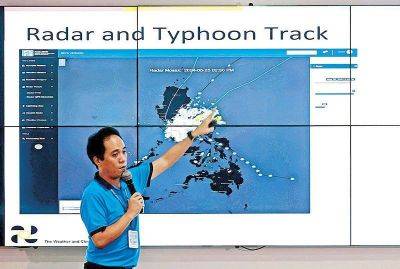Preparations ongoing for La Niña – DSWD
THE Department of Social Welfare and Development (DSWD) is set to deliver more food packs and non-food relief items in areas that are expected to be hit by typhoons and provinces which are anticipated to be heavily affected by the La Niña phenomenon.
Social Welfare Assistant Secretary and spokeswoman Irene Dumlao said the DSWD is now preparing for La Niña even as it contiues to extend assistance to provinces and families affected by the El Niño weather phenomenon.
Dumlao said DSWD Secretary Rex Gatchalian last Friday spearheaded a Preparedness Meeting for La Niña, which was attended by herself, DSWD Disaster Response Management Group (DDRMG) Undersecretary Diana Rose Cajipe, Logistics Management Bureau (NRLMB) Director Leo Quintilla, and Disaster Response Management Bureau (DRMB) Director Michael Cristopher Mathay.
The Philippine Atmospheric, Geophysical and Astronomical Services Administration (PAGASA) has said that the onset of the La Niña is expected from July to September this year.
La Niña is a weather phenomenon where above-normal rainfall and 10 to 13 typhoons from June to November are expected.
PAGASA has identified areas where more rains are expected but did not elaborate.
Dumlao said the DSWD has also assessed its “Buong Bansa Handa” program to determine the current status of the preparedness of the different field offices as well as the status of stockpiles of food and non-food relief items that have been previously prepositioned in different regions and provinces.
She said the DSWD is also following the supply chain lines for relief response wherein the
Supply Chain 1 involved local government units (LGUs) and the use of their warehouses for the food packs to ensure easier access and faster delivery of assistance during calamities; and Supply Chain 2 that involves the use of private supply chain infrastructures such as the warehouse of big regional and national grocers to stock the food packs and non-food items.
Dumlao said the use of the warehouses of the LGUs and private grocers are covered by a memorandum of agreement and certain guidelines.
She said that mobile command centers (MMCs) have also recently been deployed to different regions to ensure







